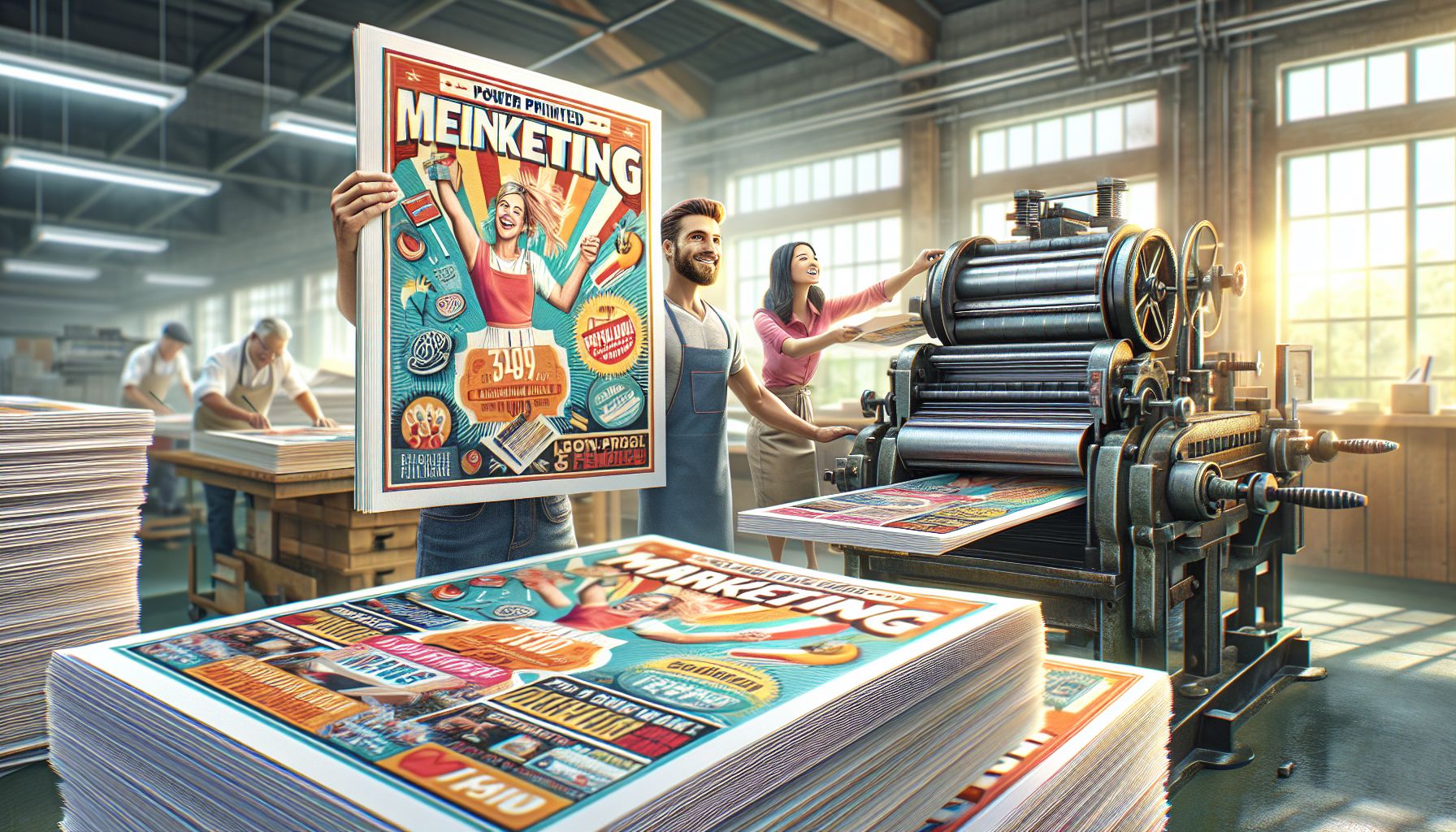In the age of digital marketing, it’s easy to overlook the impact of printed materials. With so much emphasis on online advertising and social media campaigns, businesses may question the relevance and effectiveness of print marketing. However, the truth is that print marketing still holds a special place in the marketing mix. In this article, we will explore the power of printed marketing and why it should not be underestimated.
Introduction
Printed marketing materials have been around for centuries, and for good reason. From brochures and flyers to business cards and direct mail, print marketing has proven to be a highly effective way to engage with potential customers. Despite the rise of digital media, print materials continue to offer several unique advantages that can contribute to the success of any marketing campaign.
In this digital age, where our inboxes are constantly flooded with emails and our social media feeds are filled with ads, print materials offer a refreshing alternative. When done right, they can capture attention, engage the senses, and create a lasting impression. Let’s dive deeper into the various benefits of printed marketing.
1. Tangible and Memorable
Unlike digital content, print materials are tangible. The physical presence of a brochure, direct mail piece, or business card can evoke a sense of legitimacy and importance. By providing something physical, you have a better chance of grabbing your audience’s attention and making a lasting impression.
Furthermore, print materials are often kept and revisited. A well-designed brochure can find its way onto a potential customer’s desk or into their filing cabinet, serving as a reminder of your products or services. Unlike a fleeting online ad that can be scrolled past, print materials have the potential to stick around for a long time, allowing for repeated exposure.
2. Increased Credibility
In a world where anyone can create a website or send out an email blast, credibility is paramount. Printed materials lend an air of legitimacy and trustworthiness to your business. When people receive a well-crafted brochure or magazine, it implies that your brand is established and successful enough to invest in quality marketing collateral.
Additionally, physically receiving a printed piece creates a more personal connection between your brand and the recipient. It shows that you are willing to invest in them and their experience, instead of relying solely on impersonal digital methods. This personal touch can go a long way in building trust and forming a loyal customer base.
3. Targeted Reach
Print marketing allows for strategic targeting that digital channels can’t always achieve. With direct mail, for example, you can carefully select the recipients based on various criteria such as location, demographic information, or purchasing behavior. This targeted approach increases the chances of reaching the right people, as opposed to digital ads that are often seen by a broad audience, many of whom may not be interested in your products or services.
Moreover, print materials can reach audiences that are not easily reachable through digital means. Not everyone has access to the internet or is active on social media platforms. By utilizing print marketing, you can tap into a whole segment of the population that may be overlooked by digital-focused campaigns.
4. Creativity and Branding Opportunities
Printed materials provide a unique canvas for creativity and branding. Unlike the limitations of digital screens, printed materials offer a more spacious and versatile medium to play with. From choosing the paper stock and finishes to utilizing various design elements, you have the freedom to create a visually stunning piece that truly represents your brand.
Through print marketing, you can incorporate tactile elements such as embossing, foil stamping, or textured paper to elevate the sensory experience. These subtle touches can make your brand stand out and create a tactile memory for your audience. Additionally, by designing a cohesive print campaign that incorporates consistent branding and messaging, you reinforce your brand identity and increase brand recognition.
5. Integration with Digital Efforts
While digital marketing has its advantages, it should not be viewed as an isolated channel. In fact, print marketing can complement and enhance your digital efforts. By integrating print materials with your online presence, you create a cohesive and multi-channel marketing strategy that reaches your audience in various ways.
For example, you can use QR codes on print materials to direct recipients to a specific landing page or online offer. Similarly, you can promote your social media channels and website through your printed materials, encouraging customers to connect with you digitally. This synergy between print and digital ensures that your marketing efforts work hand in hand to maximize reach and engagement.
Conclusion
In a digital world, print marketing continues to thrive and provide unique benefits that its digital counterparts cannot fully replicate. Tangibility, credibility, targeted reach, branding opportunities, and integration with digital efforts make print materials a powerful tool in any marketing campaign. By incorporating print into your overall marketing strategy, you can create a holistic experience for your audience and leave a lasting impression that helps drive success for your business. So, don’t discount the power of printed marketing – it’s a valuable and necessary component of the marketing mix.
